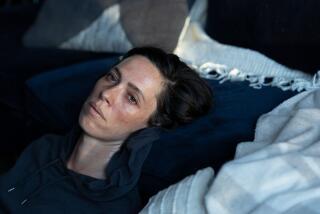John Haase, 82; Dentist, Author Whose Novel Was Made Into the Film ‘Petulia’
John Haase, a dentist and author whose 1966 novel was turned into the film “Petulia,” the dark, offbeat drama that became director Richard Lester’s memorably stylish ode to the swinging ‘60s, has died. He was 82.
Haase, who practiced dentistry in Westwood for 40 years, died of complications from emphysema Aug. 3 at his home in Montecito, Calif., said his wife, Janis.
Many of his patients were stars and the author of 11 novels penciled out plotlines between dental appointments.
The late Los Angeles Times columnist Art Seidenbaum once told an editor at the newspaper that if all else failed, she could track down a certain celebrity by calling Haase’s dental office, Janis Haase recalled.
Their 1975 wedding on a dock in San Pedro featured a performance by his friends, the band Van Halen.
Unhappy with how his novel, “Me and the Arch Kook Petulia” was turned into a screenplay, Haase wrote about the adaptation in The Times in 1967. While the first draft was “better than the book,” Haase said that a later screenwriter “wrote about a world I’d never known existed, and if it does, I’d strongly suggest he keep it to himself.”
Yet the resulting 1968 film featured strong performances by George C. Scott as a recently divorced doctor, and Julie Christie as the unhappily married, kooky waif who pursues him. Praising director Lester’s pop-culture sensibility, many critics considered the film one of the best of the 1960s.
Another Haase novel, “Erasmus With Freckles,” became the 1965 movie “Dear Brigitte,” a family farce starring Jimmy Stewart and Billy Mumy as his son, Erasmus Leaf, who has a crush on Brigitte Bardot.
“Adapting a brilliant dentist’s charming novel to the screen was like pulling teeth,” screenwriter Hal Kanter jokingly told The Times in 1964 as he praised the “gentle satire” in “Erasmus.”
After the 1961 Haase novel “The Fun Couple” made it to Broadway a year later with the book’s title intact, the author joked that perhaps “those title changers had a point.” The play, with Dyan Cannon and Jane Fonda, had closed in two days.
Known for more intimate work, Haase tackled a broader canvas in his first historical novel, “Big Red,” a story of the marvel of engineering that brought about the Hoover Dam in the early 1930s. The Times review in 1980 called it “a powerful picture of an era ... a serious study of a desperate time.”
Born Aug. 21, 1923, in Frankfurt, Germany, Haase was the only child of a Lutheran father and a Jewish mother. In a 1984 Times story headlined “A Boy’s Rite of Passage Out of Nazi Germany,” Haase wrote of his mother being beaten and of relatives who plundered the possessions his family left behind. They fled in 1936 and sailed for San Francisco, where his mother’s family lived.
Because his parents considered writing an uncertain career, Haase earned a bachelor’s degree from UCLA before attending dental school. During World War II, he served in the Army in Texas.
By 1948, Haase was a Westwood dentist, married to the former Jean Rosenblatt, with whom he had four children; their marriage ended in divorce. Within 10 years, he would publish his first book, a paperback called “The Young Who Sin.” His last, “San Francisco,” came out in 1983.
Haase also was a travel writer who freelanced for many publications, including The Times, and a sailor who kept a boat moored in Marina del Rey.
When asked if he struggled to balance dentistry and writing, Haase once replied: “The best answer and the only one for me is that I enjoy them both.”
In addition to his second wife, Janis, Haase is survived by his children, Robert of Bend, Ore.; Leslie of Boulder, Colo.; Tracy of Berkeley; Peter of Santa Cruz; Sue Box of Arcadia; and Alan Emerson of Pasadena; 11 grandchildren and six great-grandchildren.
A celebration of his life will be held Aug. 26 at the Haase home in Montecito.
More to Read
Only good movies
Get the Indie Focus newsletter, Mark Olsen's weekly guide to the world of cinema.
You may occasionally receive promotional content from the Los Angeles Times.







